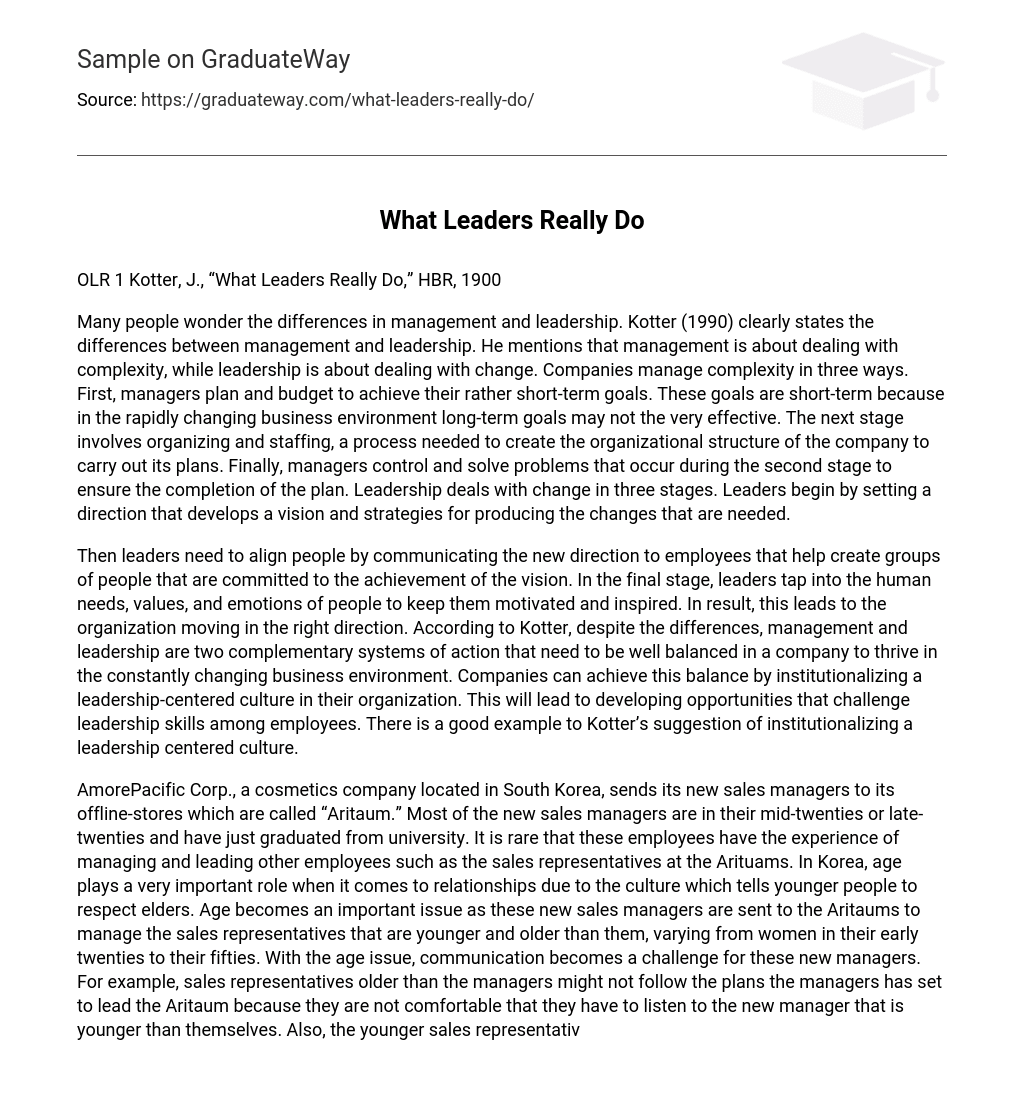According to Kotter (1990), there are distinct differences between management and leadership. Management focuses on handling complexity, while leadership focuses on managing change. Companies address complexity through three methods. Firstly, managers create short-term goals through planning and budgeting, considering the rapidly changing business environment. Secondly, organizing and staffing is carried out to establish the company’s organizational structure and execute the plans. Finally, managers control and resolve problems that arise during this stage to ensure successful plan implementation. On the other hand, leadership tackles change in three stages. Leaders begin by envisioning a direction and developing strategies for implementing necessary changes.
According to Kotter, leaders must align employees by communicating the new direction and creating committed groups of people who are dedicated to achieving the vision. Additionally, leaders should tap into human needs, values, and emotions to keep employees motivated and inspired, resulting in the organization moving in the right direction. Kotter emphasizes that management and leadership are two complementary systems of action that should be balanced to thrive in a constantly changing business environment. To achieve this balance, companies should institutionalize a leadership-centered culture, which will provide opportunities for employees to develop their leadership skills. An example that supports Kotter’s suggestion of institutionalizing a leadership-centered culture is…
AmorePacific Corp., a cosmetics company based in South Korea, assigns its newly appointed sales managers to its offline stores known as “Aritaum.” These managers, mostly in their mid to late twenties and fresh graduates, often lack prior experience in leading and supervising employees like the sales representatives at Aritaums. In Korean culture, age holds great significance in relationships, emphasizing respect towards elders. Consequently, managing the sales representatives at Aritaums, who range from women in their early twenties to their fifties, presents a unique challenge for these young managers due to the age disparity. Effective communication becomes particularly difficult as a result of this age dynamic.
For instance, sales representatives who are older than the managers may not conform to the plans established by the managers to lead Aritaum. This resistance can stem from their discomfort with having to take direction from a younger manager. Conversely, younger sales representatives may simply follow the instructions provided by the new manager and maintain a respectful distance due to their elder status.
Effective communication is crucial as it can have severe consequences. At Aritaums, young managers are trained to lead and manage employees effectively to accomplish AmorePacific’s goals and vision. This creates a culture that emphasizes leadership by offering challenging opportunities for young staff. Through this experience, these individuals acquire the necessary skills for excellent leadership and become well-prepared for future roles in their careers.
References
- Kotter, J. P. (1990) What Leaders Really Do. Harvard Business Review, 1990





